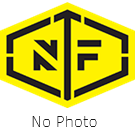|
You will be working in the Laser Room . In order to keep safe from hazards created by you or other workers using any of the tools in this room, the following precautions apply in addition to any other precautions:
Safety
- Hazards: fumes, fire, noise, lacerations.
- Wear hearing protection when the exhaust fan is on, as it's loud enough to cause hearing damage.
- Check the debris tray before and after. Debris buildup can cause a fire as the laser cuts through the workpiece and enters the debris tray.
- Do not cut unknown or unapproved materials. If the material is not on the approved list, ask for permission on Slack.
- Heat can build up when doing multiple passes on wood, causing the material to ignite. If you're cutting thick wood and it doesn't go through in three passes, stop.
- Do not cut multiple layers of fabric, paper, cardboard, etc at one time. The increased air between the layers can increase the risk of fire.
- Note when cutting lightweight materials like fabric or paper: any cutouts produced can be blown around by the air support and exhaust; if they pass between the lens and the material they can cause a fire or blow out the lens.
- Always use a vector grid when cutting all the way through.
- Don't wear loose hair, clothing, jewellery, etc. as they can become entangled in the belts.
Running lasers unattended
Due to risk of fire, do not leave the lasers running unattended. You must be close to the lasers and able to respond quickly in case of emergency. In particular, pay close attention to the laser when it is running in vector mode as the fire risk is greatly increased compared to vector mode.
Interlocked enclosures and laser classification
- Never circumvent the interlocked enclosures on our laser cutters
- Our laser cutters all contain lasers that would be considered Class 4 and subject to significant training and restrictions.
- The laser cutters implement an interlocked safety enclosure that shuts off the laser if the enclosure is opened. This reclassifies the machines to a Class 1 laser for the purpose of the actual cutting laser that is interlocked.
- However, the laser cutters end up being Class 2 laser because of the red dot pointer laser that can operate even with the lid open.
Housekeeping
- When using Big Blue, Little Blue, and Big Red: Clean the lens before the start of your session. Monitor the lens throughout - cutting messy materials like rubber may require recleaning. Note that Big Red has one extra mirror that needs to be cleaned in addition to the one in the head.
- When using Giant Blue, check the lens frequently for debris buildup and clean as required.
- Always use a lens tissue when cleaning the lens - bare Q-tips are mildly abrasive and wear away at the coatings on the lens
- Break down waste before bagging (pieces should be smaller than 6" x 6"). Blunt any sharp edges so they don't break the bag.

for all
|
that is a bigger garbage issue... see Todo
|
|

